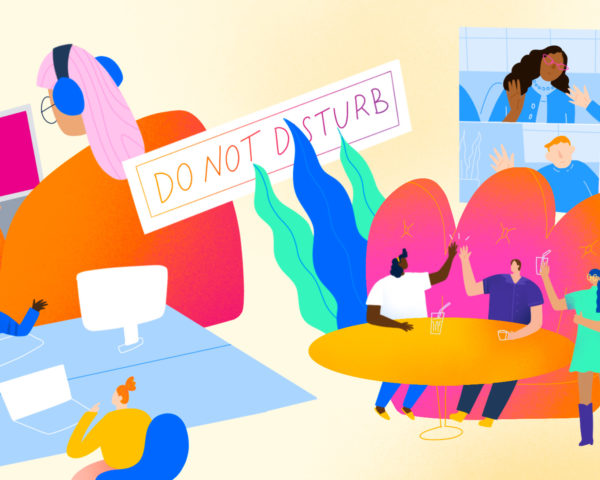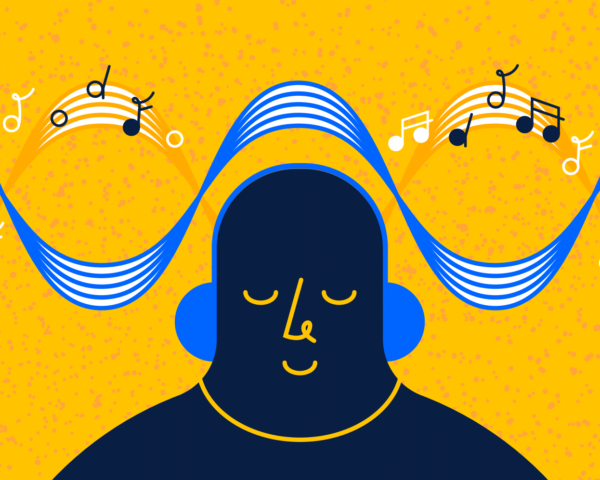Night owl or early bird? Discover your circadian personality
How to design your workday around your body’s energy highs and lows.
5-second summary
- Chronobiology – the science of our bodies’ biological clocks – has strong implications for our ideal work schedule.
- Optimizing your deep work blocks, as well as your sleep and wake times, can profoundly affect your productivity levels and your overall well-being.
You’ve probably heard of larks and owls – early and late risers, respectively – and you probably relate to one bird’s bedtime preferences over the other. These designations are known as chronotypes – circadian personalities based on your optimal time to fall asleep and wake up. Recent evidence suggests there may actually be at least two more chronotypes.
Avian analogies aside, chronobiology – the science of the biological clock that is governed by the light-dark cycle – is legitimate. Need some proof? The 2017 Nobel Prize in Medicine was awarded to three researchers for their discoveries about the molecular mechanisms controlling the body’s circadian rhythm.
Not sleeping during your body’s biological night has been linked to psychiatric disorders, diabetes, and heart problems. Having a daily schedule that doesn’t match your body clock has also been connected to poor mental performance and difficulty making good decisions.
Many employees are still expected to be working from 9am and until 5pm (or later). Problem is, most of us aren’t actually built to wake that early, especially if there’s a long commute involved. Céline Vetter, an assistant professor at the University of Colorado at Boulder and director of the university’s circadian and sleep epidemiology lab, told The New York Times that a whopping 80 percent of employees may work a schedule that’s not in sync with their natural clocks.
Only about 13 percent of people naturally sleep from around midnight to 8am, according to research from German chronobiologists. A third of people would naturally go to sleep earlier, while 56 percent of people would biologically opt for a later bedtime.
But early birds do get the worms – the worms in this case being praise from their bosses. Managers perceive employees who get in early to be more conscientious, and they give them better performance reviews than workers who stagger in later.
“Workplaces should be making the connection between chronotypes and how we’re designed to work,” says organizational psychologist Amantha Imber, PhD, CEO of innovation consultancy Inventium and author of Creating Your Most Productive Workday. “You can’t put everyone into the same mold, biologically. You want people to be working when they’re at peak mental performance.”
Workplaces should be making the connection between chronotypes and how we’re designed to work.
Amantha Imber
Find your chronotype
Since the pandemic hit, many companies have embraced hybrid and remote work arrangements, and in many cases, the shift has proven to have real staying power. Employees have come to expect more flexible options, both in terms of working hours and geography.
But even if your company isn’t quite so forward-thinking, all is not lost. Structuring your work day around your body’s natural energy highs and lows can help you be more effective, even within the typical nine-to-five day.
Try a chronotype quiz!
Learn your Chronotype with a just-for-fun (read: not a stand-in for advice from a medical professional!) quiz. We liked this one from Sleepopolis, but a quick Google offers up plenty of options.
Optimize your chronotype
Find your mental peaks
We generally move through the day in three stages; a peak (the first one is typically within two hours of waking), a trough (mid-afternoon for most people), and a recovery (late afternoon to early evening is typical), says Dan Pink in his book, When: The scientific secrets of perfect timing. For larks, the peak is in the morning, the trough is in the early afternoon, and the recovery is in the late afternoon or early evening. This order is flipped for night owls. You’re most focused in the hours leading up to your peak.
Do deep work during your peaks
Once you’ve ID’d your mental zeniths, set aside this time for what Georgetown computer science professor Cal Newport calls Deep Work: the mentally demanding stuff that requires focus and concentration. Make this time as distraction-free as possible. “When members of my team are engaged in deep work, I encourage them to switch off from distractions,” says Imber. About half of the team have this easy-to-adopt strategy: they switch on an auto-response email letting people know they won’t be responding to their message instantly.”
Do admin in the middle of the afternoon
Most people spend the bulk of their time in shallow work – tasks that don’t require much deep thinking – constantly distracted by the ping messages, while trying to squeeze their deep work in between them, says Imber. Instead, block out time in the middle of the day (your trough) to file expense reports, or have meetings that don’t require much analytical thinking.
Adjust your working hours accordingly
Imber lets her team at Inventium work by their body clock (they all took a quiz similar to the one we linked above). “Three people on my team are larks. They regularly start work at 4am or 5am and as a result, finish up a bit after lunch. And then we’ve got ten or 11 middle birds [those who are like larks, but on a few hours’ delay] tend to start at around 8am or 8.30am. Our CEO is the only owl. She’ll send emails at 10pm but not 7am,” says Imber. Of course, adjustments are made if people have to be at client meetings at a time that doesn’t align with their clock, but Imber says her team is more productive when they work this way. Want to ask your boss if you can re-align your schedule to your inner tick-tock? Be sure to manage expectations, says Imber. You need to communicate to team members and clients when you’ll be available and how to reach you if an urgent matter comes up during your off hours.
Manage meetings
Half your team is larks, the other is owls. So how do you ever have an effective meeting? Atlassians share their User Manuals with their team, which often offer clues that can help you plan meetings when most members of your team are mentally at the top of their game. Imber’s team tries to meet in the middle, scheduling their meetings during the middle of the day, since this isn’t a peak for anyone.
Network at the right times
After-work mixers are draining for early birds. If you’re up with the sun, network or catch up with colleagues during lunch. Owls will still be going strong come evening, so should network during dinners and happy hour events.
Schedule breaks
“Humans are designed to work in sprints, not marathons,” says Imber. Breaks improve performance, so add them hourly – even during your peaks. One study showed that the most productive performers work for a solid 52 minutes and then had a break for 17 minutes. (To achieve this, Imber schedules what would have previously been 60-minute meetings for 50 minutes. so she can grab a quick breather between appointments.) Other research suggests that hourly five-minute walking breaks boost energy, sharpen focus, improve mood, and reduce feelings of fatigue in the afternoon more effectively than one 30-minute break. If possible, take that walk outside; 40-second “Green Micro-breaks,” that is, taking in a view of greenery, increases concentration levels by 8%.













































